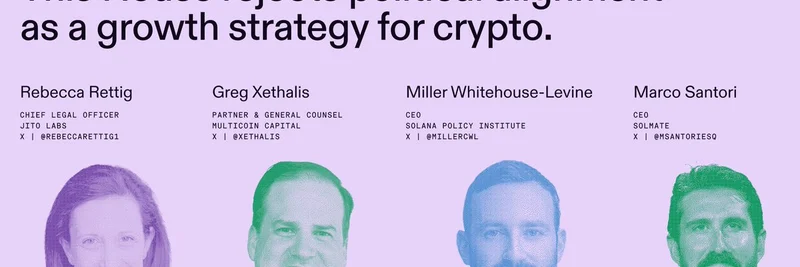If you’ve been searching for “HYPR” and wound up confused, you’re not alone. There are multiple tokens using the HYPR ticker across chains and projects. This article focuses on the HYPR token at the BNB Chain contract 0x589254a4ebe0fbca174dcbcf1d0a13909c0461f5, which shows up on BscScan as “Hypira,” and helps you separate it from similarly named projects like HyperBurn and Hypr Network.
Quick facts
- Contract: 0x589254a4ebe0fbca174dcbcf1d0a13909c0461f5
- Network: BNB Chain (BEP-20)
- Tracker: BscScan token page
- Label on BscScan: Hypira (HYPR)
- Supply and activity: Listed total supply of 10,000,000; low holder count and minimal trading activity observed on-chain at time of research
Note: Low activity and no clearly linked official website/whitepaper point to a low-profile or inactive token. Always verify before interacting.
Why the confusion around “HYPR”?
Several unrelated projects use the same ticker:
- HyperBurn (HYPR) on BNB Chain: A deflationary “reflect” token from the HyperJump ecosystem with documented tokenomics, separate contract addresses, and its own AMM (HyperSwap). Learn more via the docs: HyperJump Docs and CoinMarketCap. This is not the same as the Hypira address above.
- Hypr Network (HYPR) on Ethereum: A Layer 2 initiative oriented toward ZK-enabled on-chain gaming with a fixed supply. See CoinMarketCap and TokenInsight. Again, unrelated contract and design.
Because “HYPR” is reused, it’s critical to match the exact chain and contract every time.
What we can confirm about 0x5892… (Hypira)
From BscScan:
- It is a BEP-20 token labeled Hypira (HYPR).
- The supply is listed as 10,000,000.
- There are relatively few holders and little to no price/volume data surfaced.
There is no verified project site, roadmap, or tokenomics linked from the contract page. That typically signals one of the following: a newer/experimental token, a dormant listing, or simply a token without a public-facing product. Treat accordingly.
Tokenomics: knowns and unknowns
- Hypira (this address): No public tokenomics, utilities, or distribution details verified via official links.
- HyperBurn (different address): Documented deflationary model with dynamic burn rates and reflections to holders, plus ecosystem components like HyperSwap and an associated $ALLOY token. See the HyperJump docs for a point of comparison.
Without official Hypira docs, assume standard BEP-20 behavior and no special mechanics until proven otherwise.
How to verify before you trade
Use this checklist to reduce risk:
- Contract match: Copy/paste the exact address into your DEX and wallet—don’t rely on ticker search.
- Explorer review: Check holders, recent transfers, and whether the contract is verified on BscScan.
- Liquidity check: Inspect the token’s paired pools on BNB Chain DEXs. Thin liquidity means higher slippage and execution risk.
- Taxes/honeypot: Test a very small buy/sell; verify transfer and sell functions aren’t blocked or overly taxed.
- Team links: Look for an official site, GitHub, audit reports, and social channels. Absence of basics is a red flag.
- Extra tooling: Analytics platforms can help surface smart money flows, security checks, and active markets. For a quick dashboard of the token, see GMGN.AI’s HYPR page for this contract.
Where and how to trade
Because this HYPR address doesn’t appear on major centralized exchanges, trading—if available—typically happens on BNB Chain DEXs.
- Research and tracking: Check the token activity on BscScan and tools like GMGN.AI.
- Swapping on BNB Chain: Use a DEX such as PancakeSwap. Manually import the contract address 0x589254a4ebe0fbca174dcbcf1d0a13909c0461f5 to avoid ticker mix-ups.
- Wallet setup: Configure a BNB Chain-compatible wallet (e.g., MetaMask with BSC network or Trust Wallet) and fund with BNB for gas.
- Slippage and test size: Start with a small test transaction, adjust slippage if liquidity is thin, and verify you can also sell.
Important: If price data is absent and pools are empty or tiny, your order may not execute or could experience heavy slippage.
Risks to keep front-of-mind
- Ticker collisions: Multiple HYPR tokens exist across chains; a wrong import leads to the wrong asset.
- Low liquidity: Wider spreads, higher slippage, and potential for failed trades.
- Incomplete information: No official docs or audits increases uncertainty.
- Smart contract traps: High taxes, blacklist logic, or sell blocks can exist in unverified contracts.
- Market risk: Even legitimate meme and micro-cap tokens are highly volatile and can go to zero.
Only commit funds you can afford to lose, and prefer transparent projects with active communities and verifiable code.
Frequently confused tokens
- HyperBurn (BNB Chain, different address): Deflationary “reflect” token in the HyperJump ecosystem, with features like HyperSwap and $ALLOY farming. See docs and CMC.
- Hypr Network (Ethereum): L2 for ZK-enabled gaming, distinct contract and supply. See CMC and TokenInsight.
Bottom line
The HYPR token at 0x589254a4ebe0fbca174dcbcf1d0a13909c0461f5 appears on BscScan as Hypira, but lacks public documentation, liquidity signals, and an evident community footprint. If you choose to engage, verify the address, test tiny, and use analytics and DEX tools to assess real-time risks. For many users, monitoring first—rather than rushing to trade—will be the wiser move.
Handy links
- BscScan: Hypira (HYPR) contract
- Analytics/trading dashboard: GMGN.AI HYPR page (this contract)
- PancakeSwap: pancakeswap.finance
- HyperBurn background: HyperJump Docs | CoinMarketCap
- Hypr Network background: CoinMarketCap | TokenInsight




